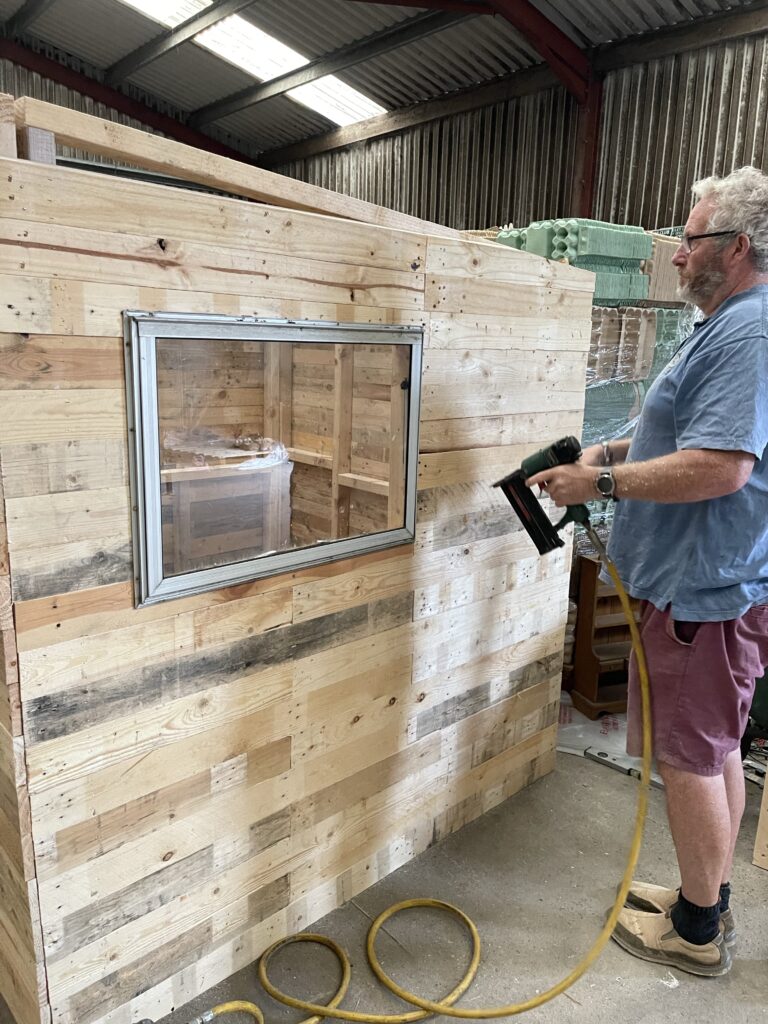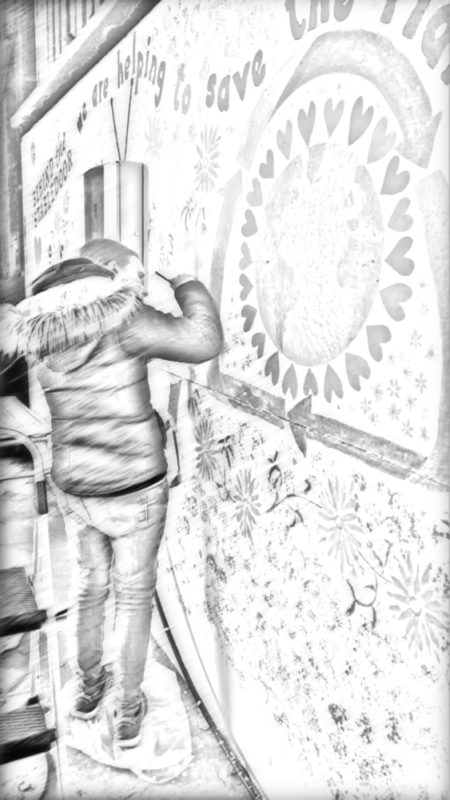As well as our education that goes on everyday at the farm we also educate through our DIY guides on our sister site Ecoshred Bed.
Learn from our Ecoshred Bed DIY guides and videos Here
As well as our education that goes on everyday at the farm we also educate through our DIY guides on our sister site Ecoshred Bed.
Learn from our Ecoshred Bed DIY guides and videos Here

In a world where recycling and sustainability have risen to prominence, alternative, creative solutions that might once have seemed unthinkable are being widely explored, embraced, and implemented. One such endeavor is the crafting of bespoke pet houses using used pallets — a project that we not only undertook, but exceeded expectations by introducing an element of extra insulation from sheep wool that has no current market value and would have been scrapped. This post dives into the intricacies of this inspiring endeavor, unpacking a potentially replicable model of sustainable construction for other communities.
Introduction: Community Farms and Sustainable Practices
Community farms are vibrant nexuses of human interaction, education, production, and, perhaps most importantly, sustainability. These places often thrive on the ethos of circular economy, where waste is minimized and resources are kept in use as long as possible. Amid the usual scene of crops, livestock, and tools, a novel project was set in motion: a pet house constructed from used pallets, with additional insulation derived from the farm’s sheep wool.
Building with Used Pallets: Recycle, Reuse, Rehome
The foundation for this innovative pet house is old pallets, materials that often go to waste. But here Behind The Stable Door, these discarded items are raw material for creativity and sustainability. The pallet wood’s durability inherently makes it appropriate for outdoor use, and its modularity allows for the easy construction of structures like pet houses.
The construction process involved breaking down the pallets, identifying usable pieces, and designing a robust structure that suits the intended pet occupant. The used pallets are sanded to remove rough edges and splinters, ensuring the safety of the pets, then assembled according to the design. The construction can be adapted to suit a variety of pets – from a compact dog house to a spacious chicken coop, for us we are using it to house our Guinea Pigs
Insulation with Wool: A Warm, Cosy Abode
The touch of genius comes from the provision of extra insulation for these pet houses. Instead of choosing synthetic materials like foam or fiberglass, we used readily available wool from their sheep. Apart from being a waste-free solution, wool is an excellent insulator – the natural crimp of the fibers creates a lot of tiny air pockets, trapping heat effectively.
The wool is stuffed between the panels of the pet house, providing a warm, cosy environment for the pets during colder months. This method also enriches the aesthetic charm of the house, giving it a rustic appeal while maintaining a high level of functionality.
Environmental Impacts and Beyond
By opting to build pet houses from used pallets and wool insulation, we continued to demonstrate commitment to sustainable practices that have positive environmental impacts. It proves the concept of a circular economy by giving a second life to materials that would otherwise have been discarded as waste.
Moreover, this project educates community members and fosters a shared sense of environmental responsibility. It demonstrates that small-scale initiatives can contribute to larger sustainability goals and hopes to inspire similar projects in other communities or farms.
Conclusion: A Model for Sustainable Innovation
Thank you to our impact partners Huhtamaki Lurgan for helping us to continue our recycling goals.
As we look to the future, such initiatives feed the narrative of the small yet transformative changes that continue to reshape our approach to resource management and ecological conservation. Our beloved pets seem simply delighted by their new, well-insulated pet houses. Yet, the resonating impact of these eco-conscious construction is a step towards fostering a global community that values sustainability in all things – big or small.
Do we Recycle, Reuse, or Upcycle ??
The facts behind climate change can often be misconstrued
So how can we keep from becoming confused?
Upcycled, Recycled, Reused
All three stop precious natural resources from being over abused
A simple explanation can be a good place to start
Without sending our neurosis off the chart
To upcycle we can turn the shabby into sheek
To recycle we can give an old product a totally new physique
With reuse we can keep an item until its called an antique
Most important is to personalise your own upcycling, recycling, reusing technique
As any or all will stop the damage to nature from becoming more bleak.
We recycle unused egg cartons that have factory defaults into animal bedding Behind The Stable Door –“The act of taking something no longer in use and giving it a second life and new function. In doing so, the finished product often becomes more practical, valuable and beautiful than what it previously was.”
All of us have wonderful skills to do this, like the lady in London who resuses discarded crisp packets to make blankets for the homeless, or the fashionable and popular art of taking old pieces of furniture and giving them a retro look and a new lease of life.
Our recycling on the farm uses egg cartons that are deemed to have factory defects and are not acceptable to the end supplier. These egg cartons are collected unused from the factory that makes them, and brought to our farm were we start the process of upcycling or recycling them, or repurposing them, giving them a new life.
Our ecoshred bed is the result of them heading through a shredding machine, getting the dust extracted and being put into bags ready for use as animal bedding.
They make super cosy, colourful, absorbent animal bedding and are also suitable to make great compost when they have been discarded after use. So we’ve twice reused them and saved a very reusable product from landfill and being homeless.
However, our future recycling dream relies on the generosity of others helping us out by understanding our dream to recycle and repurpose and support this by purchasing our bedding. That’s what keeps the wheels turning. Our recycling relies on our practical, valuable and beautiful bedding finding a new home. I hope you will check Ecoshred Bed out and join us on our recycling journey, it will be awesome if you can!

